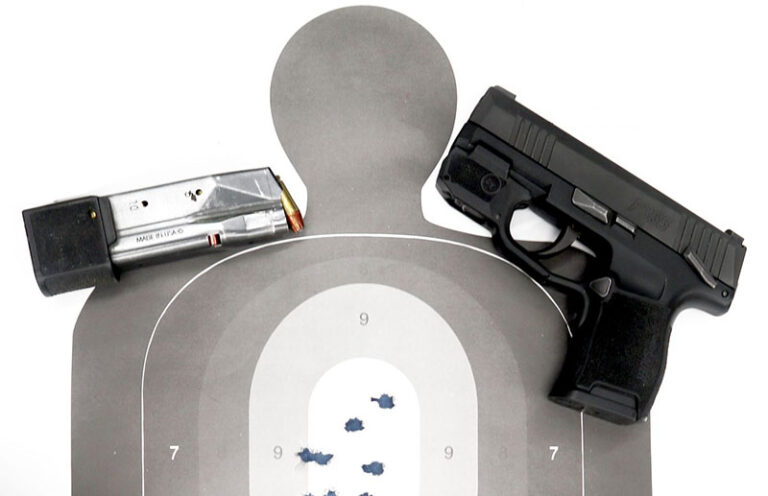
Some low-round-count drills and training tips for when ammo supplies get tight.
We’re in another round of dealing with scarce and expensive ammunition. A combination of new gun owners, political instability and COVID-19 has created our worst ammo shortage at a time when shooting sports and gun ownership are growing at an unprecedented rate. As an instructor, I’m swamped with new gun owners wanting to build their skills while ammo is scarce and expensive.
Shooting skill, like all other skills, requires repetition. New gun owners need to learn the proper fundamentals and repeat them until they become second nature. A new shooter with a lesson in basic safety and marksmanship is at the same level as a driving student after his first experience on the road.
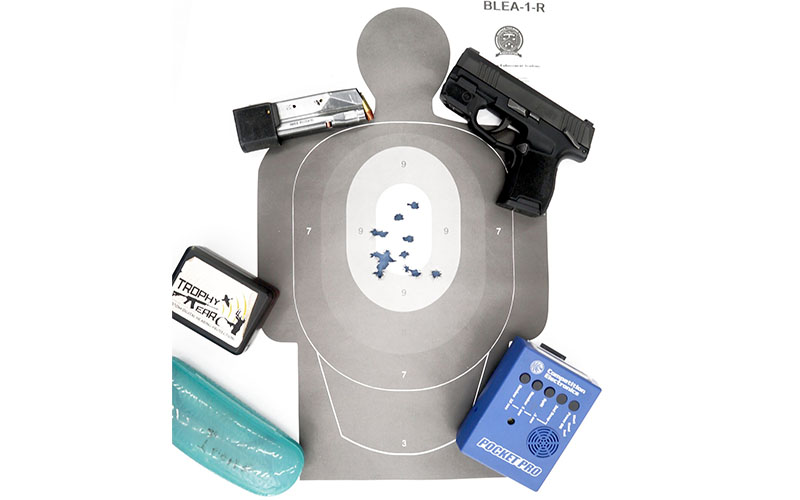
And like driving, repetition develops unconscious competence and allows adjusting strategy while performing at a high level. Meaning, even experienced shooters need to pull the trigger regularly to keep the skills sharp.
To be an effective shooter, as with an effective driver, skills must be developed through repetition. As a driver, you’re constantly situationally aware. If there’s an indication of danger, the experienced driver thinks only of the best tactic to avoid the danger without conscious thought of how he’s going to accomplish it using the controls of the vehicle.
Real skill with a firearm requires the same level of competence.
3 Low-Round-Count Drills:
One Shot, Two Sight Pictures
Since repetition is the mother of skill, this drill renders the maximum amount for skill-building reps with a minimum expenditure of ammunition.
For accurate shooting within the constraints of time, the presentation of the gun must be safe, consistent and fast. The sight picture should be acquired during presentation, and there when presentation is complete. At the time of full acquisition of the sight picture, the trigger finger should be on the pressure wall of the trigger; if the sight picture is there, the trigger pressure should be increased until the gun fires. With practice, this should be accomplished within about 2 seconds from concealment and 1.5 seconds from a belt holster. Once the trigger breaks, the shooter should re-acquire the pressure wall during recoil, resume the sight picture and assess whether another shot is required.
The biggest impediment to accuracy with a pistol, either in shooting slowly or rapidly, is trigger management. Everyone I train can see the sights and hold the gun well enough for reasonable accuracy. Poor accuracy is almost always due to poor trigger management due to anticipation or flinch. Flinch is an involuntary response and as such can’t be avoided if the affected shooter knows the exact instance the gun will fire. The answer to accuracy is the surprise break. If the sight picture is there, the shooter increases pressure until the gun fires. Anticipation can’t occur because the exact time of the shot can’t be predicted.
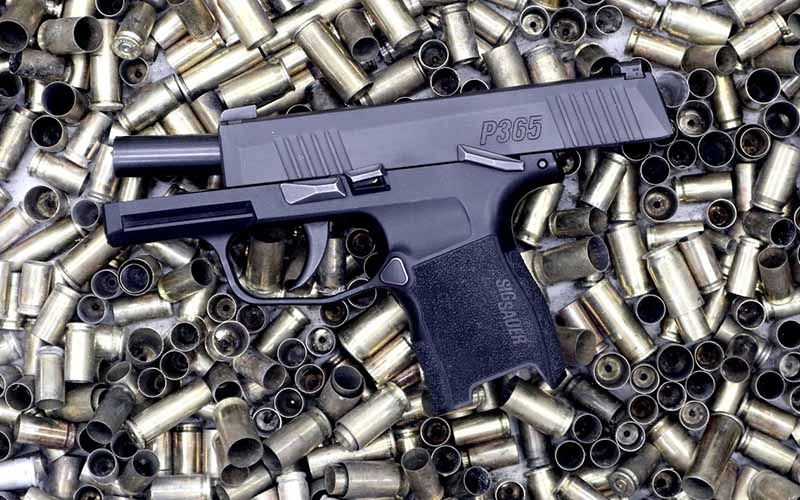
Many of my clients are new shooters, and anticipation is a huge problem. When I explain the surprise break, I see skepticism because they can’t imagine shooting fast and not knowing the exact instance the gun will fire, but the surprise break can be compressed with repetition until multiple shots can be fired from the pressure wall with a fast but smoothly increased pressure to the trigger. Accuracy has to come first, and speed can then be acquired through repetition.
Sweet 16 Qualification
Using a full-sized silhouette, USPSA or half-scale silhouette at half distance, this drill develops an awareness of time versus accuracy, covering almost all aspects of action or defensive shooting. If desired, two targets can be used to include transitioning to another target.
The object is to strive for accuracy while developing awareness of needing more time to get accurate shot placement. I use the BLEA-1-R half-scale target with a 2×3-inch 10-ring. If full-sized targets are used, double the distance.
This drill emphasizes the management of time/distance. To achieve a similar level of accuracy, longer shots require more time. While practice drills build skills through repetition, they also educate the shooter as to his skill level. People who don’t shoot structured practices normally greatly overestimate their skills and in a deadly force event, this could have disastrous consequences.
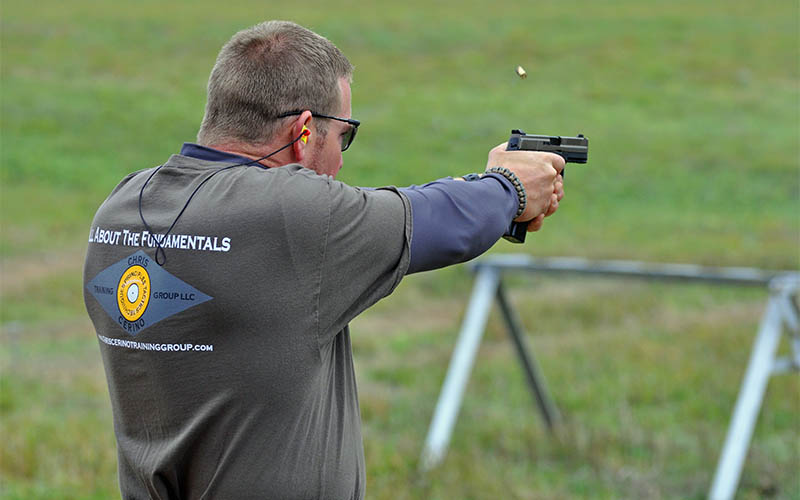
While the use of the support hand in a defensive encounter is relatively low, this part of the drill generally surprises shooters when they shoot almost as fast and—sometimes—more accurately with their support hand.
When I wrote the Gun Digest Guide to Concealed Carry Handguns book, I searched the web for instances where defensive shooters had to accomplish a magazine change. I never found one. Still, gear manipulation is important and changing magazines builds skill in that area. An interesting addition would be to add a surprise dummy round in the magazine to reinforce the tap/rack mindset.
The 5-yard stage where four shots are fired enforces proper grip and recoil management. If you must adjust your grip after a few shots, you need work in that area.
The Sweet 16 Qualification requires speed in the close stages and accuracy in the longer stages. Hitting a 2×3-inch 10-ring at 2 to 5 yards is pretty simple, but under time constraints even above-average shooters drop points at 7 and 10 yards because they fail to slow down to match the accuracy requirements of the longer distances.
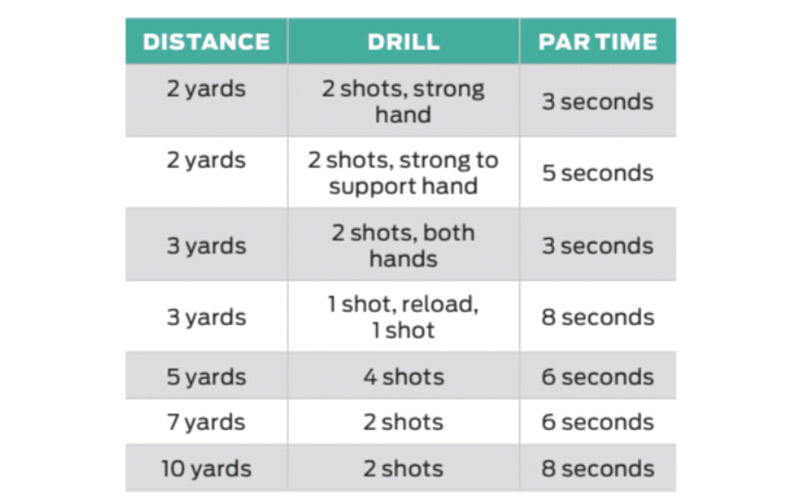
I’ll Be Back
No, this drill doesn’t involve driving a car into a police station like in the Terminator. It does, however, reinforce getting to cover whenever possible. Having watched many videos with citizens involved in defensive encounters, I’m amazed at how people simply stand out in the open when cover is readily available.
The drill starts at 5 yards with the gun holstered or placed on a table at 10 yards. Two USPSA targets are spaced 6 feet apart and cover at 10, 7 and 5 yards. On the timer’s beep, run back to cover behind the table and fire one shot at each target from right and left of the 10-yard cover. Then, move up to the 7-yard barrel for one shot left and right and repeat at the 5-yard cover. Another party loads his magazine with one dummy round at a random point.
The idea is to reinforce the need to use cover if available. I allow shooters to shoot on the way to cover if they’re moving. But the second shot should be from behind cover. Having a dummy round pop up at some point in the high-intensity drill instills the conditioned reaction to tap/rack the gun as soon as they get a click/nothing as opposed to a shot.
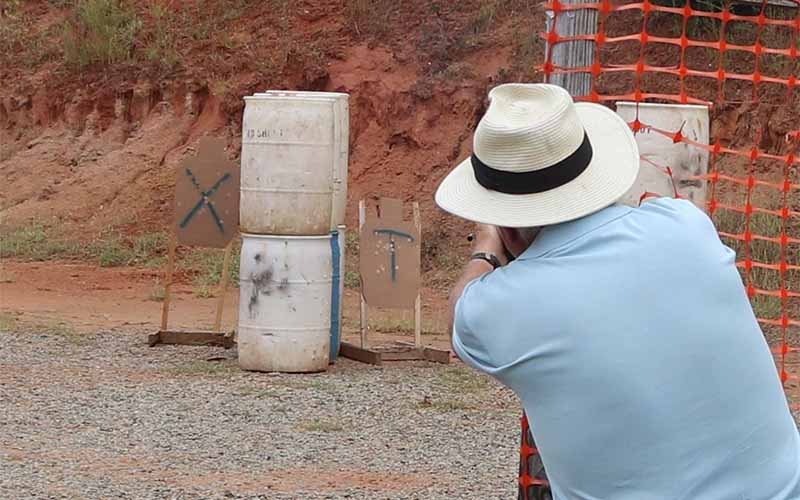
While many shooters simply cycle the slide when nothing happens, this isn’t the best option. Concealed-carry guns are carried close to the body, and the magazine release is compressed to the body, sometimes getting pressure from ordinary movements. Most concealed-carry guns will hold the magazine in place when it’s dropped slightly. If the magazine has dropped below engagement level, racking the slide gets nothing and consumes considerable time because the gun must be re-grasped and another sight picture acquired. Tapping the magazine before racking adds much less time.
These three low-round-count drills consume very small amounts of ammunition while providing a very high value in acquiring skills. They’re valuable to new shooters as well as those who have extended shooting skills. They’re easy enough to not intimidate a new shooter yet challenging to higher skilled shooters when trying to beat previous times.
The adage is to shoot until you’re standing in a pile of brass. Unfortunately, this is currently both difficult to accomplish and expensive. There’s no substitution for repetition, but every session should be concentrated on exceeding previous performance. That’s how real skills are acquired.
Editor's Note: This article originally appeared in the February 2022 issue of Gun Digest the Magazine.
More On Self-Defense Training:
- 6 Defensive Handgun Drills to Master
- The Shot Timer And Defensive Handgun Training
- Dry Fire Training To Improve Defensive Handgun Skills
- Aiming A Defensive Handgun, Is There One Right Way?
- 7 Steps To Control Fear And Make Sound Decisions Under Stress

Next Step: Get your FREE Printable Target Pack
Enhance your shooting precision with our 62 MOA Targets, perfect for rifles and handguns. Crafted in collaboration with Storm Tactical for accuracy and versatility.
Subscribe to the Gun Digest email newsletter and get your downloadable target pack sent straight to your inbox. Stay updated with the latest firearms info in the industry.

![Best Concealed Carry Guns In 2025 [Field Tested] Wilson Combat EDC X9S 1](https://gundigest.com/wp-content/uploads/Wilson-Combat-EDC-X9S-1-324x160.jpg)


![Best 9mm Carbine: Affordable PCCs [Tested] Ruger Carbine Shooting](https://gundigest.com/wp-content/uploads/Ruger-Carbine-Shooting-100x70.jpg)
![Best AR-15: Top Options Available Today [Field Tested] Harrington and Richardson PSA XM177E2 feature](https://gundigest.com/wp-content/uploads/Harrington-and-Richardson-PSA-XM177E2-feature-100x70.jpg)
